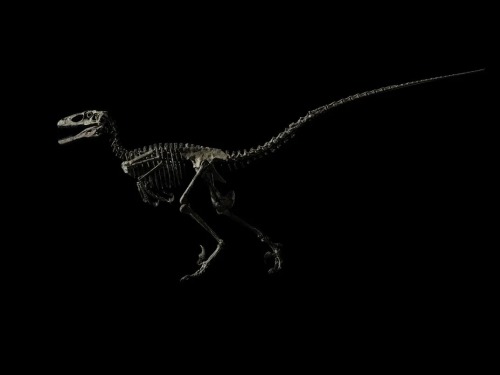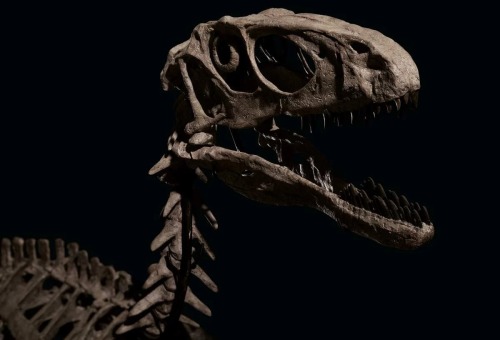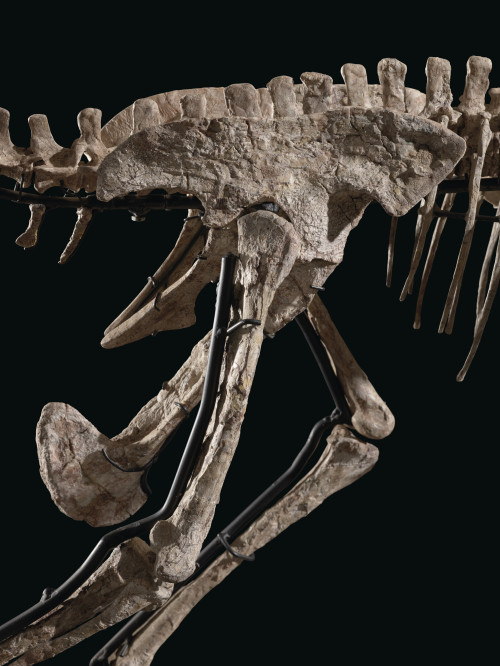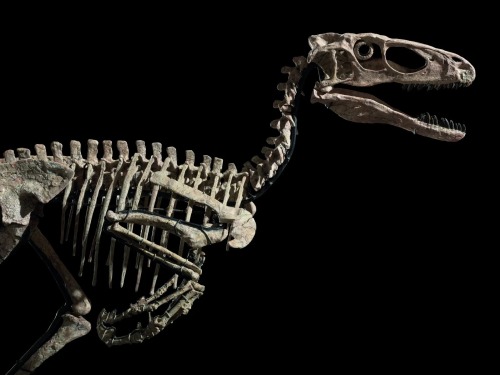#john ostrom
“Hector” (Deinonychus Antirrhopus), Montana, Usa,
From the Cloverly Formation, Wolf Canyon, Carbon County, Montana, the Early Cretaceous (circa 115-108 million years ago).
Excavated at Wolf Canyon, Carbon County, Montana (in the W1/2NE1/4 of Section 23, Township 4 South, Range 24 East, P.M.M.) 2013-4
Pangea Fossils February 2015.
Fifty million years before the reign of the dinosaurs ended in the age of Tyrannosaurus rex, a smaller, more agile, pack-hunting predator was the most feared animal of its time. The sleek, dynamic, and deadly Deinonychus is one of the most popular and well-known dinosaur species, but also one of the rarest fossils. Its popularity would peak following its leading appearance alongside T. rex as the Raptor in Jurassic Park. Taking his name from the greatest of the Trojan warriors, ‘Hector’ is the most complete skeleton of his species ever found.
Known for its long talon-like claws and elegant frame, Deinonychus flourished in western North America during the Early Cretaceous period. Part of the clade of dinosaurs called theropods (carnivorous animals that can walk on two legs), these sickle-clawed predators were armed with a deadly kick. Their fossil remains are typically found in the Cloverly Formation and the Antlers Formation, which are thought to have provided an environment of tropical and sub-tropical forests, lagoons, swamps, and river deltas for Deinonychusto inhabit.
The name Deinonychus was coined by palaeontologist, John Ostrom, in 1969 and translates to “terrible claw,” in reference to the killing claw on each foot. Shaped like a sickle and held up off the ground when not in use so as to maintain its lethal sharpness, this claw was used to disembowel its prey. It is believed that in order to use the claw with the highest degree of success, Deinonychus would have stood on one leg, holding the target with its long arms, and impaled its prey with a powerful kick. This attack was aided by the ability to use its arms, unlike many other dinosaurs, and the ability to stretch its hand to nine inches long. Indeed, it is believed that the main use of the arms was for this very purpose, and it is unlikely that the arms were ever used to walk on. Its deft movement and predatory skill were further supported by Deinonychus’ ability to stand on its hind legs when attacking other dinosaurs. This upright, offensive stance was facilitated by its long tail that provided essential balance thanks to rows of internal bundles of bony rods that gave the tail additional strength. The tail would otherwise be stretched horizontally when running, and contributed to the exceptional length of this animal, measuring approximately 3 meters long.
119 2⁄3 x 62 1⁄4 x 26in. (304 x 158 x 66cm.)
Courtesy of Christie’s
Post link







